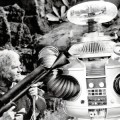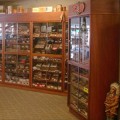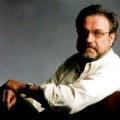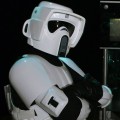For Andre Bormanis, a long-time science consultant for the Star Trek franchise and guest speaker at this weekend’s SETICon in San Jose, some things in science fiction have grounding in actual science: like binary pulses and the theory of symbiogenesis. Other things, he tells me, might not be as logical.
Teleportation, for example, with characters getting beamed to and from different starships and planets, is not possible, he admits. “You’re essentially tearing someone apart, killing them and then putting them back together,” Bormanis explains. “I don’t think that would ever be practical.”
Phasers, the handheld particle beam weapon used to vaporize enemies on Star Trek, are another example: “Handheld phasers would take a tremendous amount of energy to literally disintegrate someone. The heat of someone disintegrating would probably do a lot of damage to you, too.”
Bormanis, who has a background in physics and astronomy, began as a science consultant on Star Trek: Next Generation in 1993. From there, he worked on Star Trek: Deep Space Nine, Star Trek: Enterprise, eventually becoming a writer and executive producer on Enterprise. The job consisted of reading scripts for scientific accuracy, helping writers and producers with ideas and technical dialogue, and being the go-to guy for how big comets are or how fast they move. But science fiction is still, well, fiction, so Bormanis says that his key to keeping even some of the unrealistic things—like phasers and teleporters—grounded in fact, was to use analogies to real science.
“Even in the invented stuff I always tried to incorporate logical reasoning in which those future technologies were depicted,” he says. One example is an episode in which the Enterprise is sent to reheat the core of a planet, which is impossible, but Bormanis decided to use an analogy to a nuclear reactor, which can raise the temperature of uranium by several hundred degrees. “It’s purely fictional, but it’s based in a certain kind of logic rooted in real science,” he says.
June 22 through 24 at the Hyatt Regency in Santa Clara, Bormanis will be participating in panel discussions at SETIcon II, an event dedicated to thinking about space exploration, technology, imagination and education. He will be joined by other scientists, science fiction authors, artists and space lovers to participate in a wide selection of conversations. Bormanis will moderate a panel discussion about the impact the discovery of extraterrestrials beings would have on human religion. Another topic he will address is how science fiction has represented alien life. These are all topics he has had to wrestle with during his work with the Star Trek series.
“I think sci-fi is more relevant than it has ever been to prepare the public for the kinds of decisions we as a society will have to make,” Bormanis concludes. “It’s kind of an opportunity to give the public a chance to think about what impact science and technology has on our lives today and what impact it might have on the future.”
Among the other speakers scheduled for SETIcon II are animator Gabriel Alvarado-Marin, explorer Nathalie A. Cabrol, SETI pioneer Frank Drake, astronomers Debra Ann Fischer and Andrew Fraknoi and science guy Bill Nye.
—Matt Miller
SETIcon II
June 22–24; $25 and up
Hyatt Regency, Santa Clara
 TechConnect Brings Visual Art and Chiptune to Museum of Art
TechConnect Brings Visual Art and Chiptune to Museum of Art  Fourth of July Guide
Fourth of July Guide 


